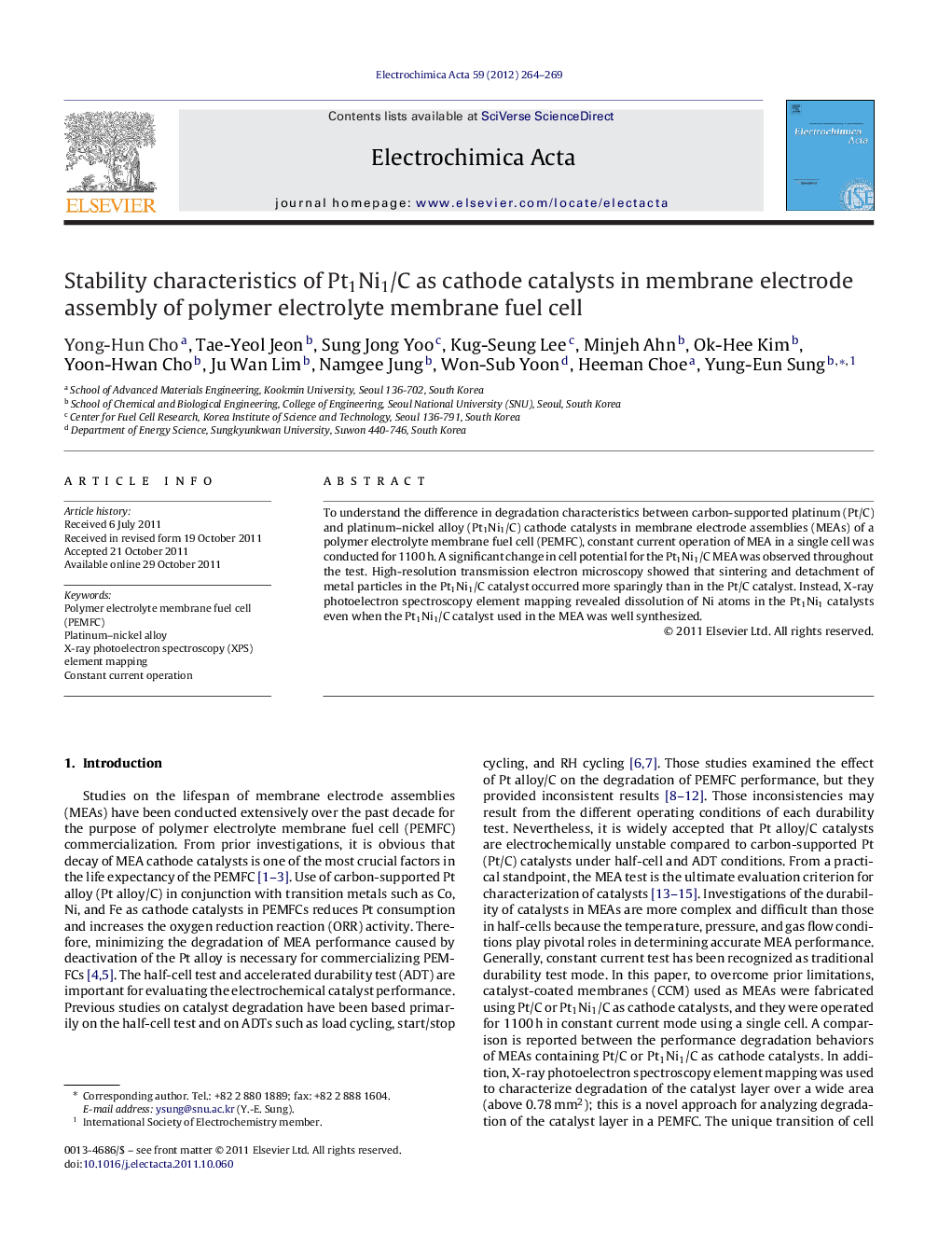| Article ID | Journal | Published Year | Pages | File Type |
|---|---|---|---|---|
| 189341 | Electrochimica Acta | 2012 | 6 Pages |
To understand the difference in degradation characteristics between carbon-supported platinum (Pt/C) and platinum–nickel alloy (Pt1Ni1/C) cathode catalysts in membrane electrode assemblies (MEAs) of a polymer electrolyte membrane fuel cell (PEMFC), constant current operation of MEA in a single cell was conducted for 1100 h. A significant change in cell potential for the Pt1Ni1/C MEA was observed throughout the test. High-resolution transmission electron microscopy showed that sintering and detachment of metal particles in the Pt1Ni1/C catalyst occurred more sparingly than in the Pt/C catalyst. Instead, X-ray photoelectron spectroscopy element mapping revealed dissolution of Ni atoms in the Pt1Ni1 catalysts even when the Pt1Ni1/C catalyst used in the MEA was well synthesized.
Graphical abstractFigure optionsDownload full-size imageDownload as PowerPoint slideHighlights► The stability test of the MEA was performed at practical operation conditions. ► The MEA with Pt1Ni1/C catalyst showed severe electrochemical instability. ► The surface of catalyst layer was characterized using XPS mapping. ► XPS mapping can be used to characterize the wide active area (above 0.78 mm2). ► Pt1Ni1/C catalyst experienced nickel dissolution during the degradation test.
